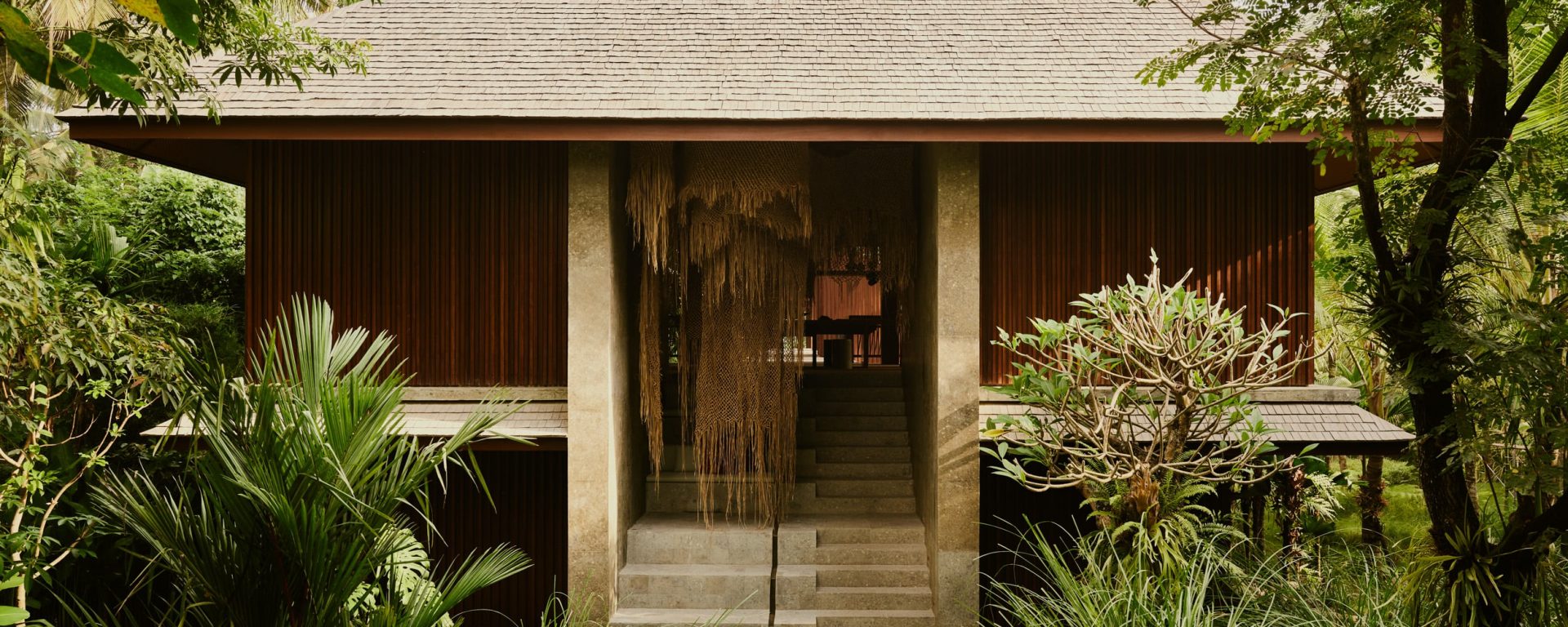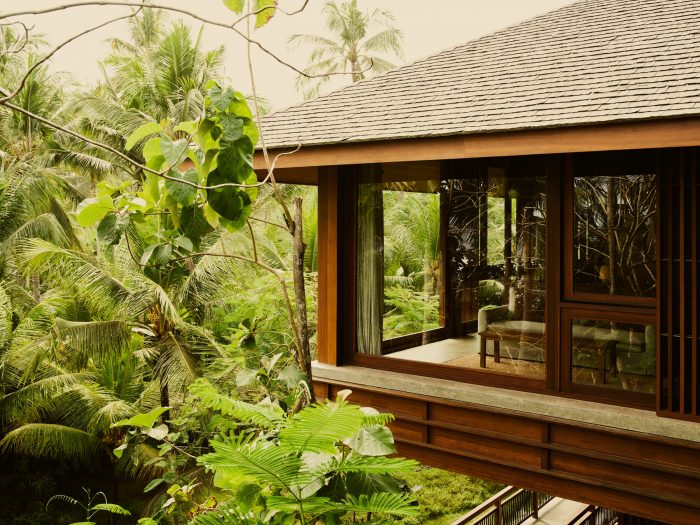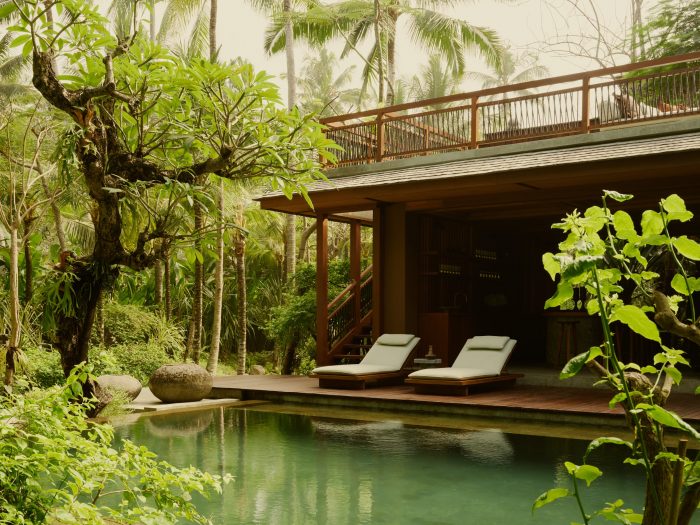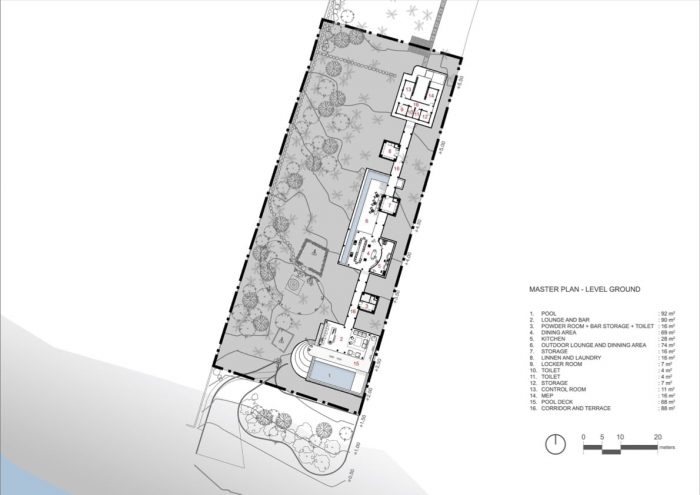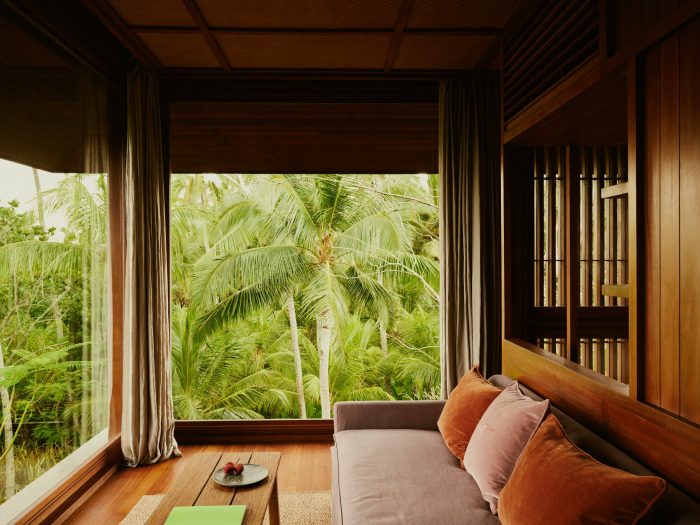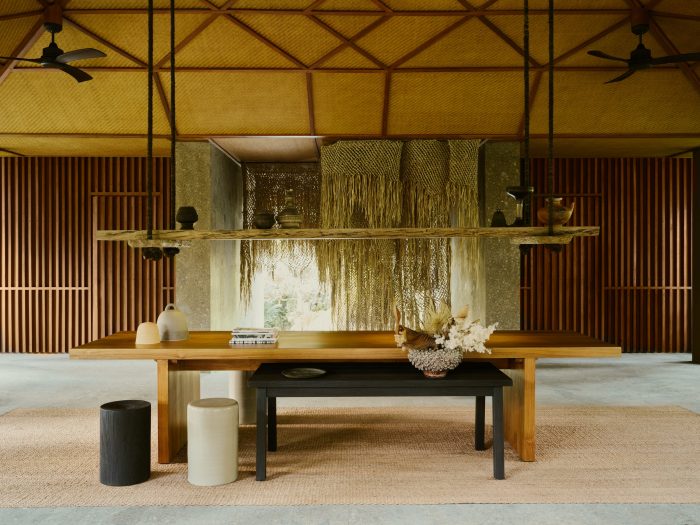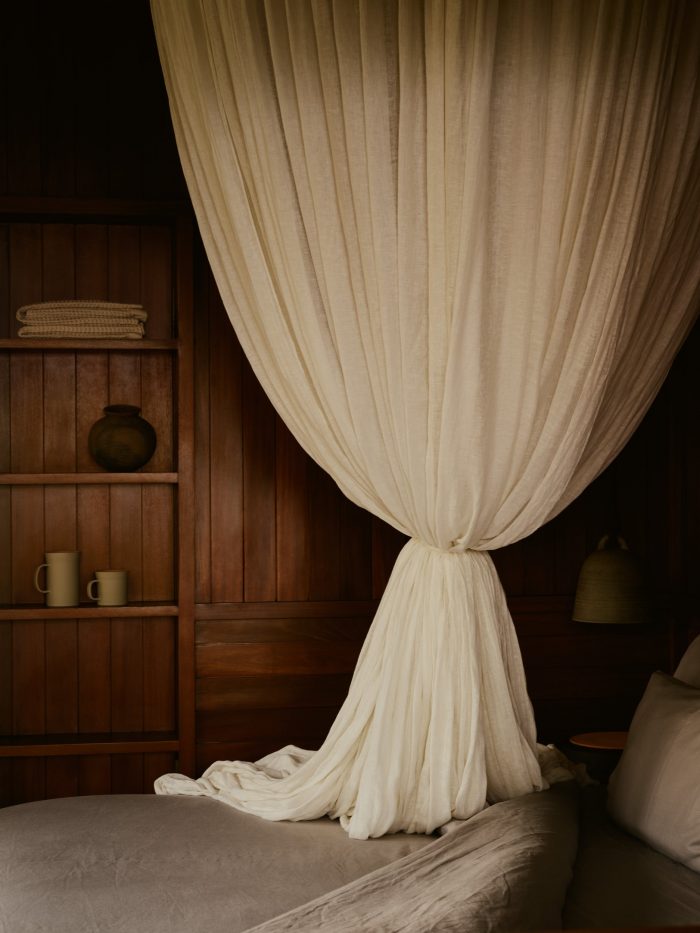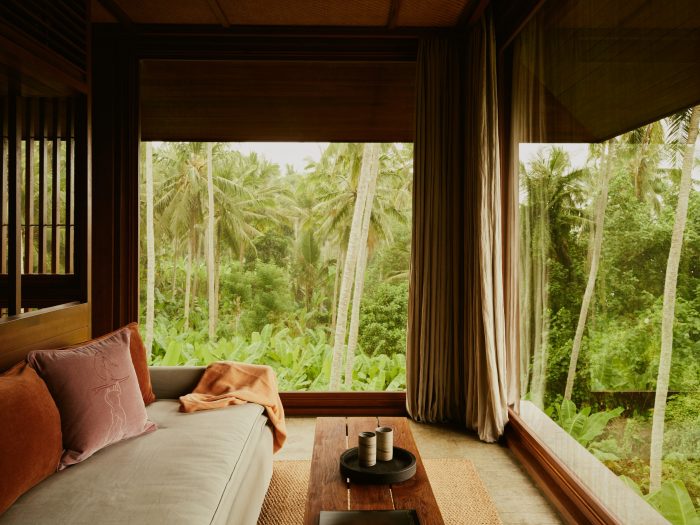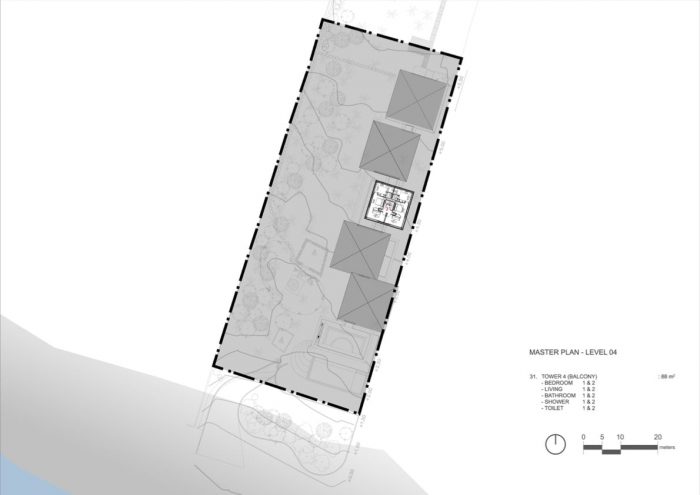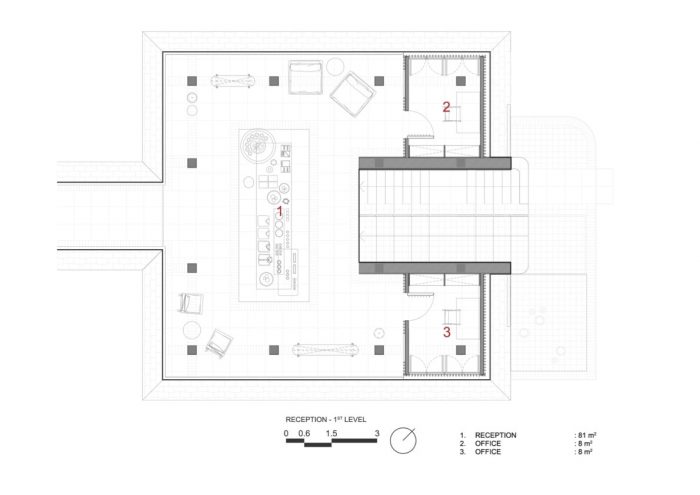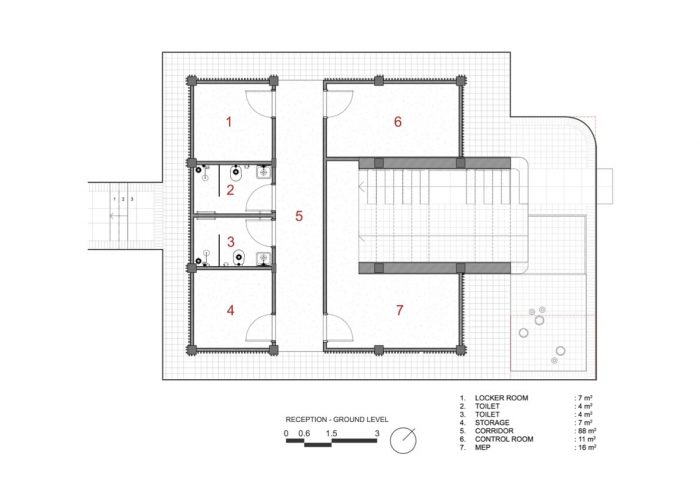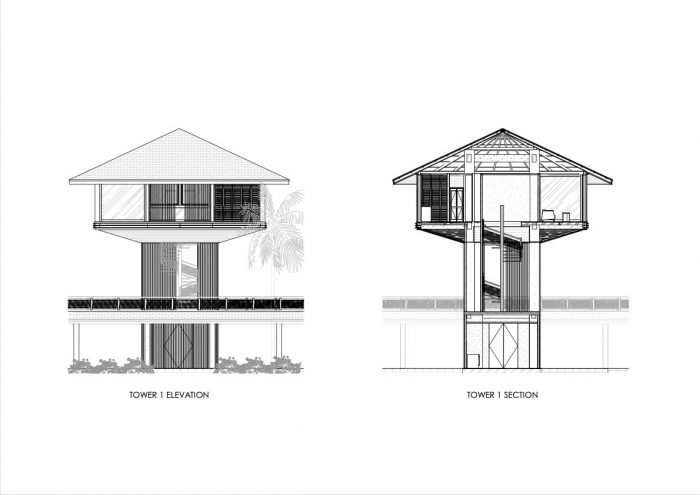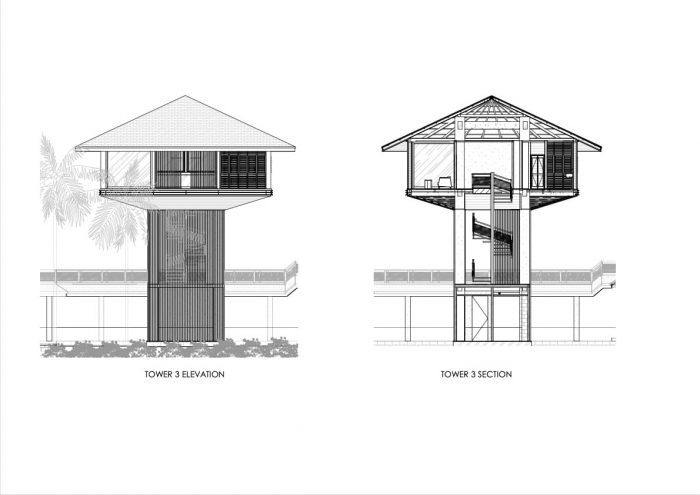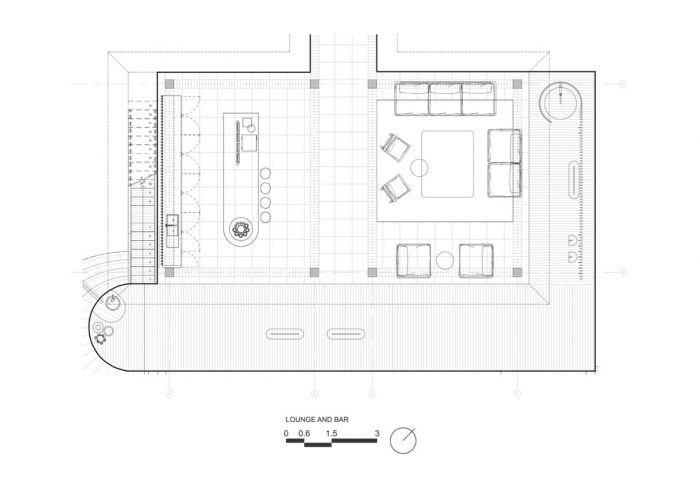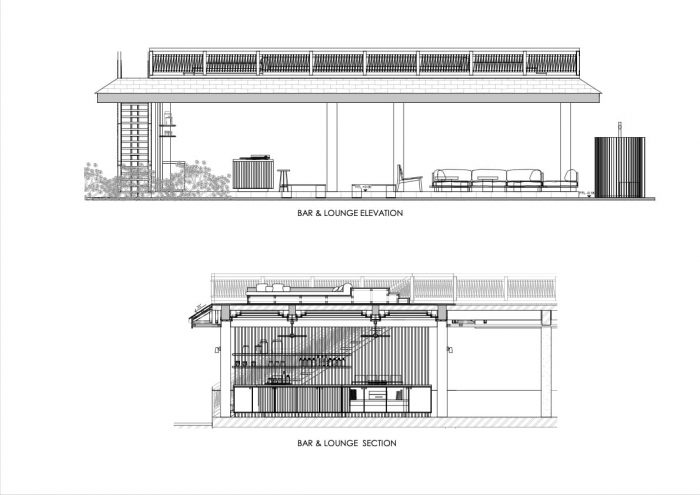地点
LOST LINDENBERG是Pekutatan社区的一部分,这是一个位于巴厘岛西海岸的印度教小村庄,基本上没有被旅游业所触及。这里是一个被寺庙包围的隐蔽的度假胜地,被大自然和神圣的精神所统治–距离著名的梅德维冲浪点仅一箭之遥。
房间
这里有两个不同类型的八个房间。客人可以从每间树屋中瞥见海浪,但坐在前排位置的两间海洋全景套房可以直接看到大海;六间丛林全景套房可以看到丛林和寺庙的景色。45平方米的套房都配备了当代艺术、可持续亚麻床品、定制的加雅陶瓷、空调和宽敞的浴室。
冲浪
梅德维冲浪点是巴厘岛最长海浪的所在地,吸引了各种水平的冲浪者,冲浪是入住LOST酒店的一个重要因素。酒店自己的LOST BEACH仍然是一个鲜为人知的冲浪点,房费中包含有当地教练的冲浪课程。酒店内部与Pyzel冲浪板合作制作的冲浪板可供租用。
餐厅和酒吧
长达七米的实木餐桌是LOST LINDENBERG的核心,客人们在这里谈话和享用丰盛的食物。这里的烹饪概念以其季节性和地方性的味道来赞美自然,并提供以植物为基础的巴厘岛家庭烹饪方法,同时也有西方的影响。所有的原料都是在LOST种植的,或者是从附近的有机生态农场采购的。早餐可以选择自制燕麦片、热带水果和椰子法式吐司,晚餐可以选择丰盛的米饭和各种辣味的桑巴(辣椒酱)。池畔酒吧提供经典的长饮、当地的昆布酒和季节性的鸡尾酒。
水疗
小型水疗中心位于LOST的丛林中。它是按照Gladak的风格建造的,Gladak是一种传统的木制房屋,最初用于储存农作物,现在这里是一个宁静的地方。巴厘岛式的按摩可以抚平被冲浪拉伤的肌肉;治疗的灵感来自于当地的仪式和芳香疗法,使水疗中心充满了洋甘菊、薰衣草、柠檬草和佛手柑的香味。
LOCATION
LOST LINDENBERG is part of the Pekutatan community, a small Hindu village on Bali‘s west coast that is largely untouched by tourism. A hidden retreat surrounded by temples, ruled by nature and sacred spirits – and only a stone‘s throw from the famous Medewi Surf Point.
ROOMS
There are eight rooms of two different types. Guests can catch a glimpse of the waves from each of the treehouses, but the two Ocean Panorama Suites, which sit in front row position, look directly out to sea; the six Jungle Panorama Suites offer views of the jungle and temples. The 45m2 suites are all furnished with contemporary art, sustainable linen bedding, custom made Gaya ceramics, air conditioning and spacious bathrooms.
SURF
Home to Bali‘s longest wave, Medewi Surf Point attracts surfers of all levels, and surfing is an essential element of staying at LOST. The hotel‘s own LOST BEACH is still a little known surf spot, and included in the room rates are surf sessions with local instructors. Boards made in-house in collaboration with Pyzel Surfboards are available for hire.
RESTAURANT & BAR
The solid, seven-metre-long wooden table, where guests meet for conversations and opulent meals, is the heart of LOST LINDENBERG. The culinary concept here celebrates nature with its seasonal and local flavours and offers a plant-based approach to Balinese home cooking with western influences. All ingredients are cultivated at LOST or sourced from nearby organic permacultures. Choose from the likes of homemade granola, tropical fruits and coconut French toast for breakfast, and sumptuous rice plates with a variety of spicy sambals (chilli pastes) for dinner. The poolside bar serves classic long drinks, local kombuchas and seasonal cocktails.
SPA
The small spa is located in LOST’s jungle. Built in the style of a gladak, the traditional wooden houses originally used for storing crops, the site is now a place of tranquillity. Balinese massages smooth muscles strained by the surf; treatments are inspired by local rituals and aromatherapy, filling the spa with scents of chamomile, lavender, lemongrass and bergamot.
建筑
Alexis Dornier和Studio Jencquel负责LOST的建筑。”主要的想法是在一个神秘的丛林中创造一个不寻常的、梦幻般的体验。我们想象了离地面很高的空间和走道。建筑在高大的椰子树旁边,交错的塔楼提供了前面大海的一瞥。这些塔楼由一条所谓的高线连接,一条指向大海的高架走道。我们希望给人一种在不同世界行走的感觉,就像在一艘漂浮的船上休息,高高在上,安全无忧,而野生丛林就在你的门前。这些塔楼紧密地组合在一起,形成了一个树上的准村庄,一个小型的浮动社会。LOST的设计非常注重细节,传统的例子与夸张的对比。主要材料是可持续采购的木头,有不同的图案和方向,地板上覆盖着巴厘岛的绿色石头,黄铜被用作整个构图的点缀。通过LOST,我们在一个梦想的世界里移动,介于虚构和现实之间”。
(Alexis Dornier)
ARCHITECTURE
Alexis Dornier and Studio Jencquel are responsible for LOST’s architecture. “The main idea was to create an unusual, dreamy experience in the midst of a mystical jungle. We imagined spaces and walkways high off the ground. Constructed beside tall coconut trees, the staggered towers provide a glimpse of the sea in front. The towers are con- nected by a so-called highline, an elevated walkway pointing towards the sea. We wanted to give the feeling of walking in a different world, of resting on a floating ship, elevated and safe, with the wild jungle at your doorstep. Grouped close together, the towers form a quasi village in the trees, a small floating society. LOST is designed with great attention to detail, with examples of the traditional contrasted by exaggerations. The predominant material is sustainably-sourced wood in various patterns and directions, the floors are covered with Bali green stone, and brass is used as an accent in the whole composition. With LOST we move in a dream world, somewhere between fiction and reality.”
(Alexis Dornier)
内饰
室内概念以及其他建筑元素是由Studio Jencquel设计的。”内部装饰是温暖舒适的,仿佛要拥抱我们,整合了亚麻织物、熔岩石、热带硬木、烧焦的柚木和河石。颜色和材料都是当地采购的。浴室里的木质百叶窗模糊了室外和室内的界限,让海风吹进来,同时提供了一种保护,让我们免受炎热的太阳。全景窗户使我们能够看到地平线上经过的船只。这个项目中的家具、灯具、陶瓷餐具和几乎所有的配件都是由Studio Jencquel定制设计的。忧郁和黑暗的基本主题贯穿始终,让人强烈地感受到:我甜蜜的忧郁上有一道霓虹的疤痕”。
(Max Jencquel, Studio Jencquel)
INTERIOR
The interior concept as well as additional architectural elements are designed by Studio Jencquel. “The interiors are warm and cosy, as if they want to embrace us, integrating linen fabrics, lava stone, tropical hardwood, burnt teak and river stones. The colours and materials are locally sourced. The wooden blinds in the bathroom blur the line between outdoors and indoors, letting the sea breeze in while providing a sense of protection from the hot sun. Panoramic windows allow us to spot boats passing by on the horizon. The furniture, the lamps, the ceramic tableware and almost all the accessories in this project were custom designed by Studio Jencquel. The underlying theme of melancholy and darkness is strongly felt throughout: a neon scar on my sweet melancholy.”
(Max Jencquel, Studio Jencquel)
景观设计
“景观设计是建筑足迹的延伸(或反之亦然)。连接塔楼的高线实际上是一条小路的延续,这条小路从花园开始,穿透建筑,在黑色熔岩沙海滩结束。这条路从入口处开始,经过霓虹灯装置,首先带领我们穿过一片热带森林。这里的植物种类繁多:吊兰、蕨类植物、菩提树、香蕉树、榕树、马雅帕希特树、猴面包树、普勒树、凤梨花等等。在森林里面,我们遇到了一些时刻,比如一块长满青苔的岩石变成了喷泉,在一个神龛边上有一个用于冥想的长凳,一个封闭的花园,客人可以在那里听和读阿图尔-贝克尔的诗歌,还有中间的一棵巨大的普乐树。在森林之外,道路继续向草原延伸,这是一个靠近接待处的广阔区域,一直延伸到庄园的中部。
在这里,人们可以找到巴厘岛上的每一个草种。当我们从一个区域移动到下一个区域时,景观发生了变化,雨水被导入河岩的沼泽,看起来像溪流(或雨季的河流)。这里有
旁边有一个圣泉,在两个熔岩石庙之间有一块精心放置的大河石。在用餐区和休息区周围,大量种植了布干维拉花和芳香的 “夜来香”。在高大的建筑物旁边种植了塔树
来安抚这些建筑巨人的大小和尺寸,使它们看起来小一些。最后,一条隐蔽的小路穿过一片蒲公英树的森林通向海滩”。(Max Jencquel, Studio Jencquel)。
LANDSCAPE ARCHITECTURE
“The landscape design is an extension of the architectural footprint (or vice versa). The highline connecting the towers is actually the continuation of a path that begins in the garden, penetrates the buildings and ends at the black lava sand beach. The path begins at the entrance past the neon installation and leads us first through a tropical forest. The variety of plants here is huge: heliconias, ferns, Bodhi trees, banana trees, Banyan trees, Majapahit trees, Baobab trees, Pule trees, bromeliads to name but a few. Inside the forest, we encounter moments such as a mossy rock turned fountain, a bench for meditating by a shrine, an enclosed garden where guests can listen to and read poetry by Artur Becker, and an enormous Pule tree in the middle. Beyond the forest, the path continues on to grasslands, a vast area close to the reception that extends to approximately the middle
of the property and in which one can find every grass species available here on Bali. The landscape changes as we move from one zone to the next, and rainwater is channelled into swales of river rock that look like streams (or rivers in the rainy season). There is
a sacred spring and, next to it, a large, carefully placed river rock set between two lava stone temples. Bougainvillaeas and fragrant “lady of the night” are planted generously around the dining and lounge areas. Tower trees are planted next to the tall buildings
to appease the size and dimensions of the architectural giants and make them appear somewhat smaller. Finally, a hidden path leads to the beach through a forest of pandan trees.” (Max Jencquel, Studio Jencquel).
艺术
艺术作品的策划和使用构成了LINDENBERG所有概念中的一个重要部分。LOST LINDENBERG的艺术在印尼传统、自然和城市生活方式之间发挥着折衷作用。为此,LINDENBERG团队在当地采购了各个时代的印尼古董,如花瓶、篮子和雕像。这些物品与印度尼西亚艺术家Prawobo和英国摄影师Annie Collinge等人的当代摄影作品形成鲜明对比。在入口处,茂密的热带丛林被法兰克福著名艺术家、金狮奖得主托比亚斯-雷贝格的霓虹灯装置打断。”令人困惑的彩色信息集合代表了大多数游客可能想要逃离的嘈杂世界,当然也没有想到会在巴厘岛西海岸的丛林中找到。我的装置旨在作为一个阶段性的过渡,一个最后的、几乎是仪式性的对喧嚣的告别,当游客发现隐藏的入口并通过墙上的秘密开口进入LOST LINDENBERG的宁静天堂时,他们可以真正地离开。” (Tobias Rehberger, 艺术家)
可持续性和社会责任
LOST LINDENBERG尽可能地以环保、低废物的方式运作。太阳能电池板为庄园提供能源,餐厅使用来自LOST自己的生态农业的水果和蔬菜。所有的产品,如肥皂和卫生纸,都是按地区公平生产的;垃圾在每周的海滩清洁活动中被收集;餐厅–像所有林登堡项目一样–完全以植物为基础(不含动物产品)。
为了对当地社区做出贡献,LINDENBERG创立了LOST BUNCH,这是一个与当地冲浪者合作的教育项目,支持、鼓励并为梅德韦的儿童和年轻人开辟新的前景。这些年轻人中的许多人对冲浪充满热情,但没有机会进入教育机构。该计划将冲浪课程与英语、可持续发展和酒店管理等科目的课程相结合,希望在未来为他们开辟更多的机会。
ART
The curation and use of artistic works constitutes an essential part in all of LINDENBERG’s concepts. The art at LOST LINDENBERG plays with the eclecticism between Indonesian tradition, nature and urban lifestyles. To this end, the LINDENBERG team sourced local Indonesian antiques from all eras, such as vases, baskets and statues. These items contrast with contemporary photographs by, among others, Indonesian artist Prawobo and British photographer Annie Collinge. In the entrance area, the thick tropical jungle is interrupted by a neon sign installation by renowned Frankfurt artist and Golden Lion winner, Tobias Rehberger. “The bewildering collection of colourful messages represents the noisy world that most visitors probably want to escape from and certainly were not expecting to find here in the jungle on Bali‘s west coast. My installation is intended as a staged transition, a final, almost ritual farewell to the hustle and bustle that visitors can literally leave behind when they discover the hidden entrance and step through the secret opening in the wall into the tranquil paradise of LOST LINDENBERG.” (Tobias Rehberger, artist)
SUSTAINABILITY AND SOCIAL RESPONSIBILITY
LOST LINDENBERG operates as far as possible in an environmentally friendly, low-waste manner. Solar panels supply the property with energy, and fruits and vegetables from LOST’s own permaculture are used in the restaurant. All products such as soaps and toilet paper, are produced regionally and fairly; litter is collected in weekly beach clean-ups; and the restaurant – like all LINDENBERG projects – is entirely plant-based (free of animal products).
In order to contribute to the local community, LINDENBERG founded LOST BUNCH, an educational programme with local surfers that supports, encourages and opens up new prospects for children and young adults in Medewi. Many of these young people are passionate about surfing, but have no access to educational institutions. The programme combines surfing lessons with classes in subjects such as English, sustainability and hospitality with the hope of opening up more opportunities to them in the future.

Architects: Alexis Dornier, Studio Jencquel
Area : 8400 m²
Year : 2022
Photographs :Robert Rieger, Neven Allgeier
Manufacturers : David Pompa Lamps, Gaya Ceramics
Interior Design : Studio Jencquel
Landscape Design : Studio Jencquel
Construction Management : Bali Construction
City : Kecamatan Pekutatan
Country : Indonesia

